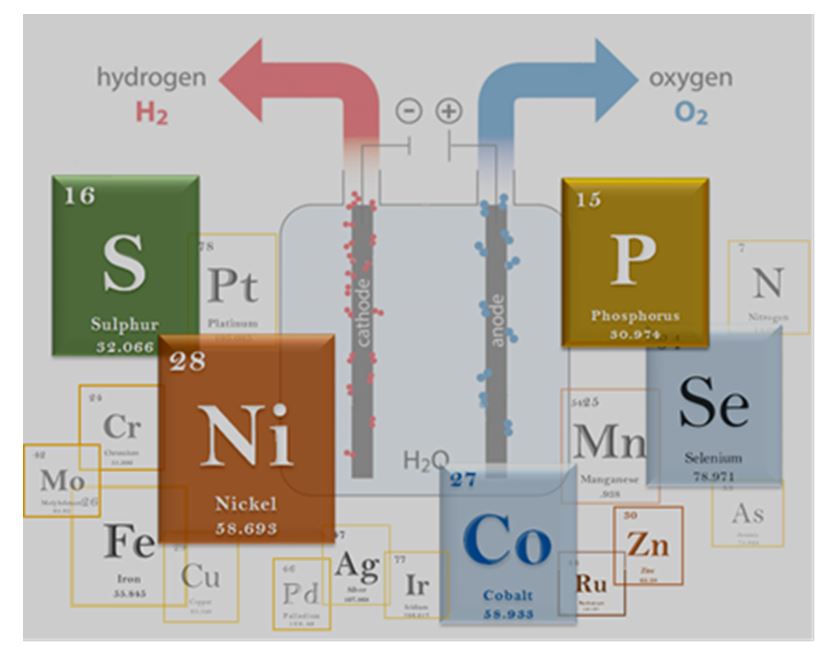Video Article Open Access
Exploring Materials for Overall Electrochemical Water Splitting Activity
Anthony O’Mullane*, Md Abu Sayeed, Ummul K. Sultana
School of Chemistry and Physics, Queensland University of Technology (QUT), Brisbane, QLD 4001, Australia
Vid. Proc. Adv. Mater., Volume 2, Article ID 2021-03157 (2021)
DOI: 10.5185/vpoam.2021.03157
Publication Date (Web): 07 May 2021
Copyright © IAAM
Graphical Abstract

Abstract
Electrochemical water splitting can be used to generate green hydrogen at a scale that is suitable for storing renewable energy. Therefore, the choice of catalyst for the hydrogen evolution reaction (HER) and oxygen evolution reaction (OER) are critical in terms of cost if this technology is to be developed at the required scale for the seasonal storage of energy. A key aspect is to replace expensive catalysts with cheaper alternatives such as those based on Fe, Co, Ni and Mn which is the focus of this presentation. Here we demonstrate that there are alternatives available to laboratory synthesised nanomaterials that are active for the OER and HER where many are based on materials that are currently produced at a very large scale such as; iron ore that contains many of the active elements required for the HER and OER, stainless steel that can be modified in a simple manner and recovery of manganese oxides from spent battery materials. I will also discuss the concept of bifunctional electrocatalysts and discuss what that means for overall electrochemical water splitting and the potential applicability of the aforementioned materials for demonstrating activity for both the HER and OER.
Keywords
electrocatalysis; water splitting; hydrogen production.
Acknowledgement
Australian Research Council (ARC) through the ARC Discovery scheme and Australian Renewable Energy Agency (ARENA).
Biography
Anthony O’Mullane received his BSc Chemistry degree (1997) and PhD degree (2001) from University College Cork (Ireland) and completed postdoctoral fellowships at Technische Universitat Darmstadt (Germany), the University of Warwick (UK), and Monash University (Australia). He is currently a professor at Queensland University of Technology, Australia. He is a Fellow of the Royal Society of Chemistry (FRSC) and Fellow of the Royal Australian Chemical Institute (FRACI). His research is focused on the electrochemical fabrication, characterisation and application of a wide range of materials. A particular focus is the area of electrochemical water splitting to produce clean hydrogen powered by renewable energy sources. A second area of interest is using liquid metals as a synthesis medium to create atomically thin nanomaterials. These are investigated as photocatalysts, gas sensing layers, actuators, heavy metal ion detectors as well as electrocatalysts for the reduction of CO2 into solid carbon. The latter is a new avenue of research looking at simple chemical transformations to remove CO2 from the atmosphere.
Video Proceedings of Advanced Materials

Upcoming Congress



